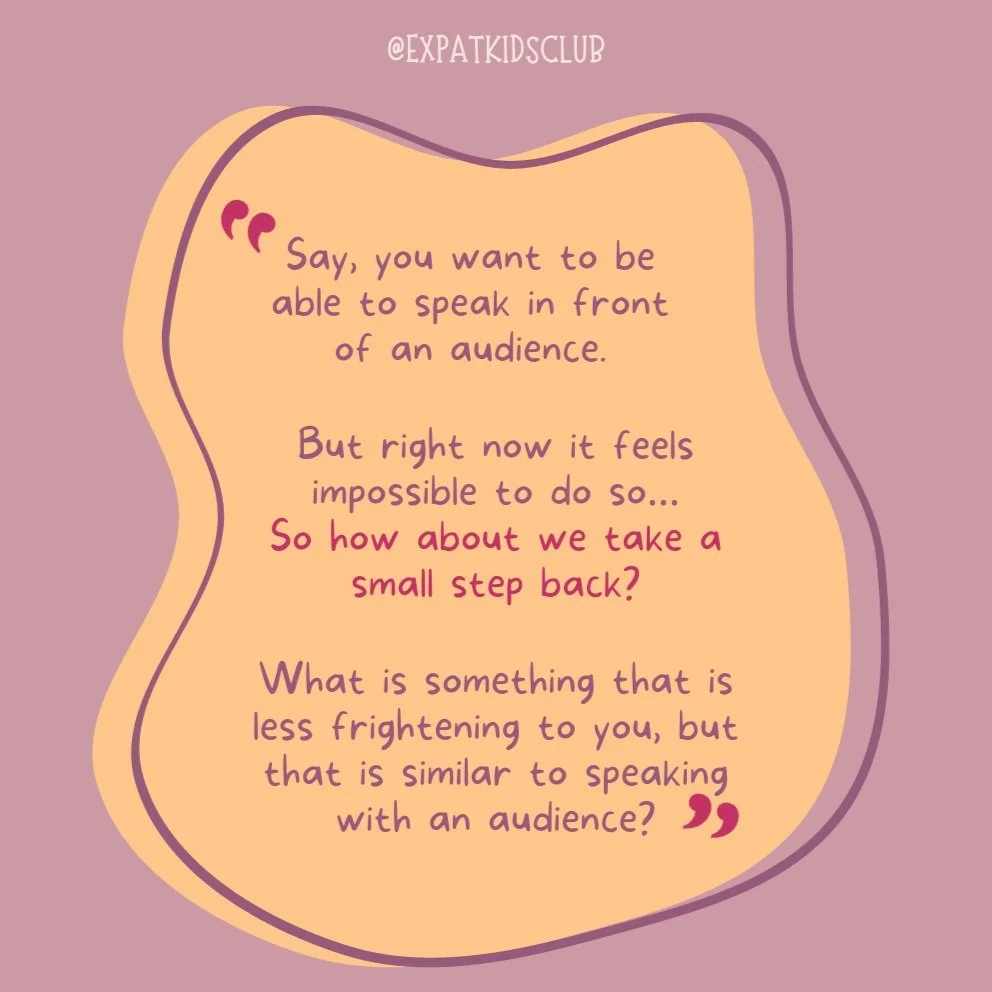“I think I can do this one!”: Finding the fear you can challenge
What is one thing you fear that you wish you didn’t?
Maybe petting a dog? Or going on a rollercoaster? Or maybe giving a speech on stage? It’s incredibly natural to want to avoid situations that bring us uncomfortable or unpleasant feelings, because that’s what those feelings are there for! Avoidance is our body’s way of telling us to leave a situation because it perceives some kind of danger in the environment. Although fear is there to protect us, if we listen to false alarms about things that aren’t dangerous, and continue avoiding fears, those fears grow.
But how can we overcome something so scary?
If we tried to challenge our fears all at once, it would probably be too overwhelming. That’s why we recommend first identifying your challenge line, which represents a level of fear or discomfort that is manageable but still pushes your boundaries.
When first trying to find your challenge line, you should try to imagine what is scary but not too scary.
Let’s say that your fear is speaking in front of an audience. Already, you may feel all sorts of uncomfortable emotions and physical sensations when you know that you have to do it. Maybe your stomach starts to hurt or your palms start to sweat. Maybe you feel your heart beat faster. You already feel like avoiding that challenge. This is an indication that you’ve crossed your challenge line. We try to get as close as we can to our challenge lines, but we also try to never cross them. This is because we want to practice feeling uncomfortable without becoming overwhelmed.
Over time, as you practice near your challenge line, your challenge line will actually move! The thing that used to be almost too scary to do, is now not scary at all! This means it’s time to move your challenge line and begin practicing with the next scary-but-not-too-scary thing.
Eventually, you will be able to work through a lot—if not all—of your list of scary things, and overcome your fear. But of course, this is all a lot easier said than done.
And how do we do it?
Working towards overcoming your fears takes commitment and discipline. It’s also completely normal for some challenges to be more difficult than others, or that you may need to go back and practice an old fear again. This isn’t a setback; it’s a part of learning! Remember to reward yourself throughout your practice to remind yourself of how far you’ve progressed.
Discovering your challenge line, as well as figuring out how to overcome fears, can be very complicated, especially on your own. The Expat Kids Club specializes in supporting children and adolescents from all over the world to help them understand more about avoidance, fears, and finding their challenge line! Using these methods, as well as others including Cognitive Behavioral Therapy, Exposure Therapy, and Acceptance and Commitment Therapy, our therapists are able to help your child grow in confidence and bravery.
Curious to learn more about our therapeutic approaches, or do you see avoidance behavior in your child? Click here to contact us and learn how we can help!


